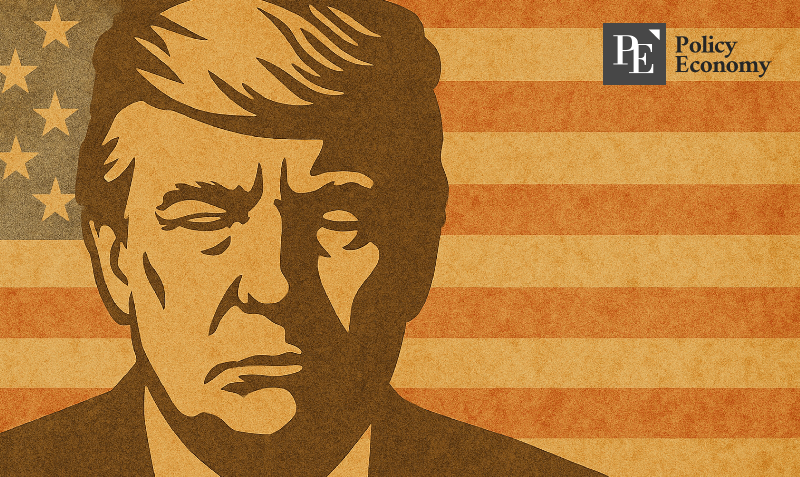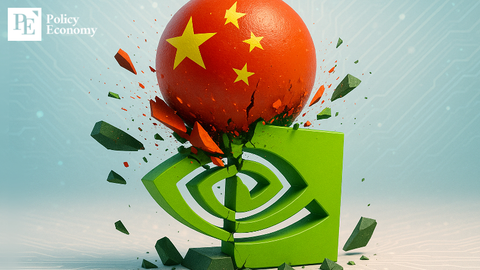"No Preemptive Tariff Rollback on China" — Trump’s Power Play? The Real Battle Is System Overhaul
Input
Modified
U.S. aims to steer negotiations with hardline message China focuses on moving away from 'labor-intensive growth' Failure in talks could mean failure in structural transition

As the United States and China begin tariff negotiations, global trade tensions are mounting. U.S. President Donald Trump has declared, "There will be no rollback of tariffs on China for the sake of negotiations," sending a strong message from the outset. This statement is seen not merely as posturing but as a calculated pressure tactic. With both nations urgently needing to address structural bottlenecks in their economies, the negotiations are expected to carry implications far beyond tariff adjustments.
A Classic Trump Negotiation Strategy
According to international reports on May 7 (local time), President Trump responded with a firm “No” when asked during a press conference at the White House—held after the inauguration of U.S. Ambassador to China David Perdue—whether he would consider partially lifting tariffs on China as part of negotiations. This statement comes ahead of a planned meeting between the two nations on May 10. The U.S. Treasury had earlier announced that Secretary Scott Bessent and U.S. Trade Representative Jamie Greer would travel to Switzerland starting May 8 to begin trade talks with Chinese officials.
Trump also partially walked back Bessent’s comments on potential tariff exemptions for products such as infant car seats. “Too many exemptions wouldn’t be ideal, but we’ll take a look,” he said. Bessent had hinted during a Fox News interview on May 6 that “the current tariff levels are unsustainable” and suggested possible relief for certain products. He emphasized that the U.S. does not seek a decoupling from China but desires fair trade.
Nevertheless, President Trump continues to deliver hardline rhetoric toward China. He strongly rejected Chinese claims that the U.S. had taken the first step toward negotiations, saying, “Anyone making that claim needs to look at the facts again.” Local media characterized this approach as a textbook example of Trump’s negotiation style—tightening the screws before the other side can react, and seizing control of the dialogue from the start.
China’s Frustration and Real Economic Pain
From China's perspective, this round of negotiations is a sensitive issue that blends economic logic with emotional weight. China argues that for decades, its cheap labor and production capacity have supported the low-inflation consumer economy in the U.S. From this viewpoint, while Americans have enjoyed price stability thanks to low-cost Chinese imports, China has borne the burden of an exploitative industrial structure and environmental costs. As such, U.S. tariffs targeting China’s “excessive profits” may appear hypocritical or unjust.
The hardest hit by the recent tariff actions are China's small and mid-sized manufacturers. According to the BBC, after the tariffs took effect, orders for electronic and electrical components in key Chinese industrial zones fell by over 60%. These businesses, heavily reliant on exports to markets like the U.S., were immediately affected by the launch of Trump’s second term—facing a sharp drop in exports, factory shutdowns, and mass layoffs. This isn’t just about a worsening trade balance—it signals a potential collapse of China’s broader manufacturing ecosystem and employment structure.
Despite this, Trump continues to insist that China should bear the brunt of inflationary costs. In an interview with ABC News at the end of last month, when asked about concerns that tariffs could raise prices on electronics, clothing, and building materials, Trump dismissed the issue: “That’s something we can’t know.” He added, “If someone has to pay the price, it’ll be them [China].” When told that tariffs as high as 145% effectively amount to an import ban, Trump replied, “That’s a good thing. They deserve it.”

‘Twin Deficits vs. Domestic Transition’ — A Structural Battle
The upcoming Switzerland talks are expected to be far broader in scope, as both the U.S. and China are using tariffs as a means to address structural bottlenecks in their own economies—a process of "systemic readjustment." For the United States, the key challenge is breaking away from the structure of twin deficits—trade and fiscal. The Trump administration’s goal is to reduce imports to improve the trade deficit, reshore industries to create domestic jobs, and increase tax revenues to enhance fiscal soundness. However, given the heavy concentration of the global supply chain in Asia, experts across the trade sector widely agree that fully restoring U.S. manufacturing is nearly impossible.
China, on the other hand, is under urgent pressure to shift its economy away from an over-reliance on exports and toward domestic consumption. Yet this is a daunting task due to weak household income levels and a fragile social safety net, which make voluntary increases in consumer spending unlikely. Furthermore, with exports weakened under tariff pressure, China faces difficulty even in accumulating the capital needed to support its domestic transition. It’s a vicious cycle: exports are needed to fund structural reform, but those exports are being blocked. Should negotiations with the U.S. fail, President Xi Jinping’s “dual circulation” strategy (domestic + international circulation) could be derailed.
Ultimately, this negotiation is unlikely to be merely about setting tariff percentages. It resembles a direct showdown—America seeking to resolve its twin deficits, and China striving to reorient its system through domestic demand. Observers note that both countries are wielding tariffs not just as economic weapons but as strategic tools to buy time—clarifying who will shoulder the cost of the global production system, and laying the groundwork for long-term structural survival.




















